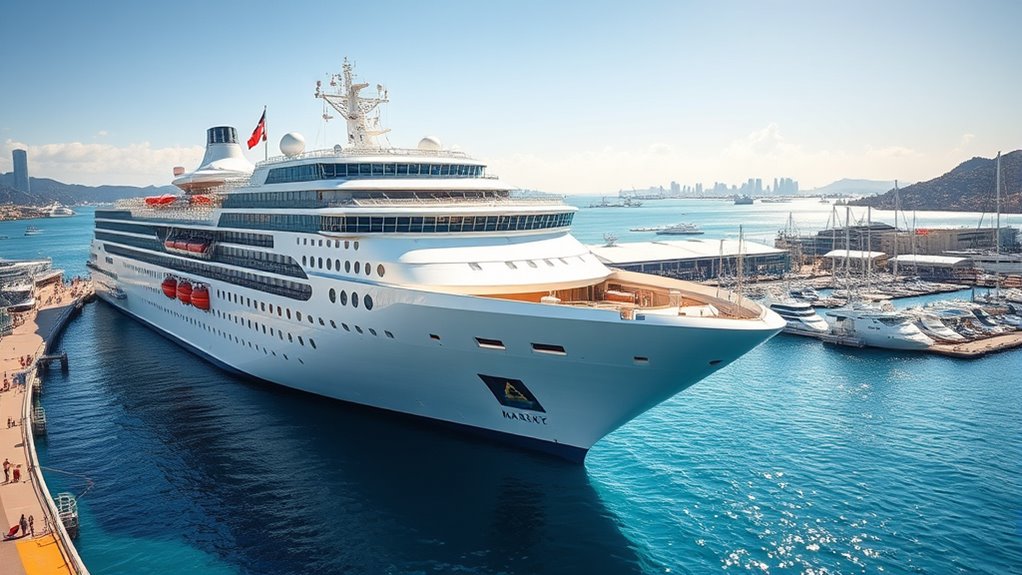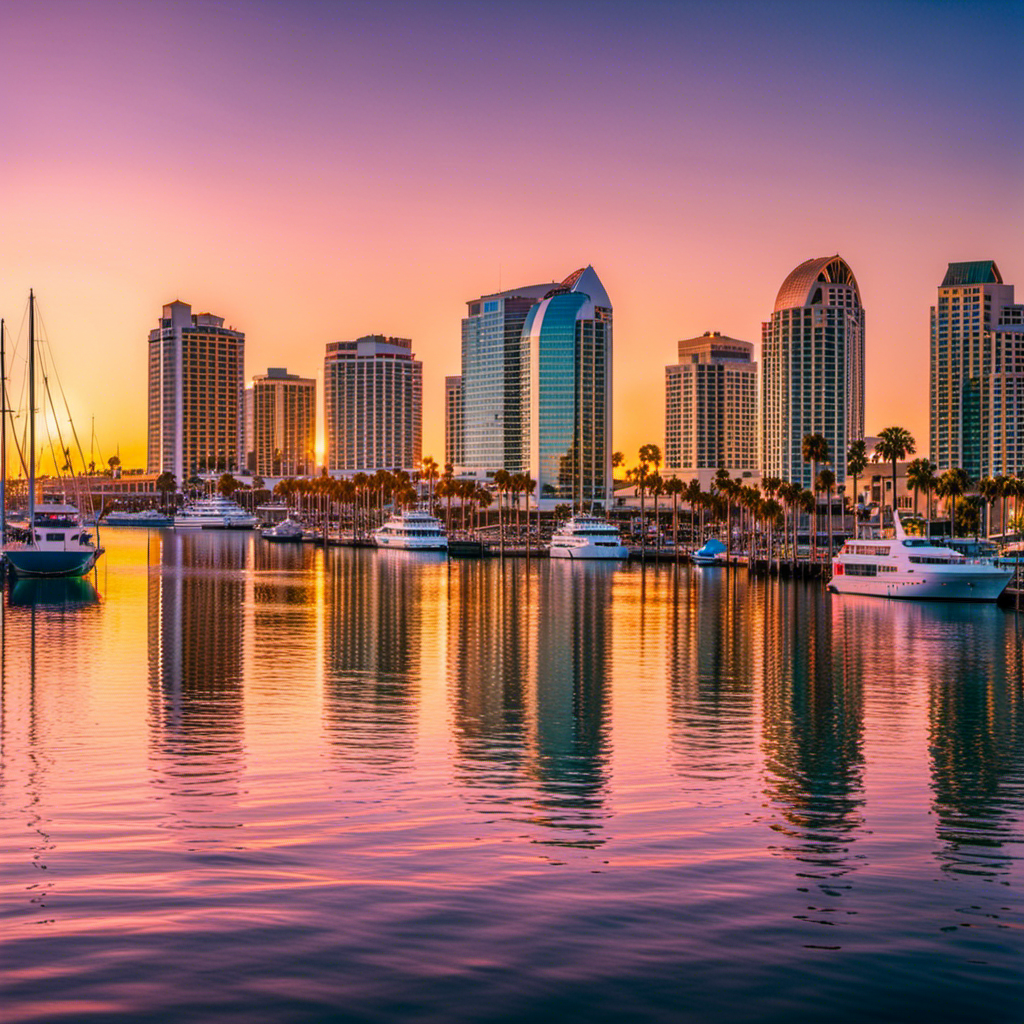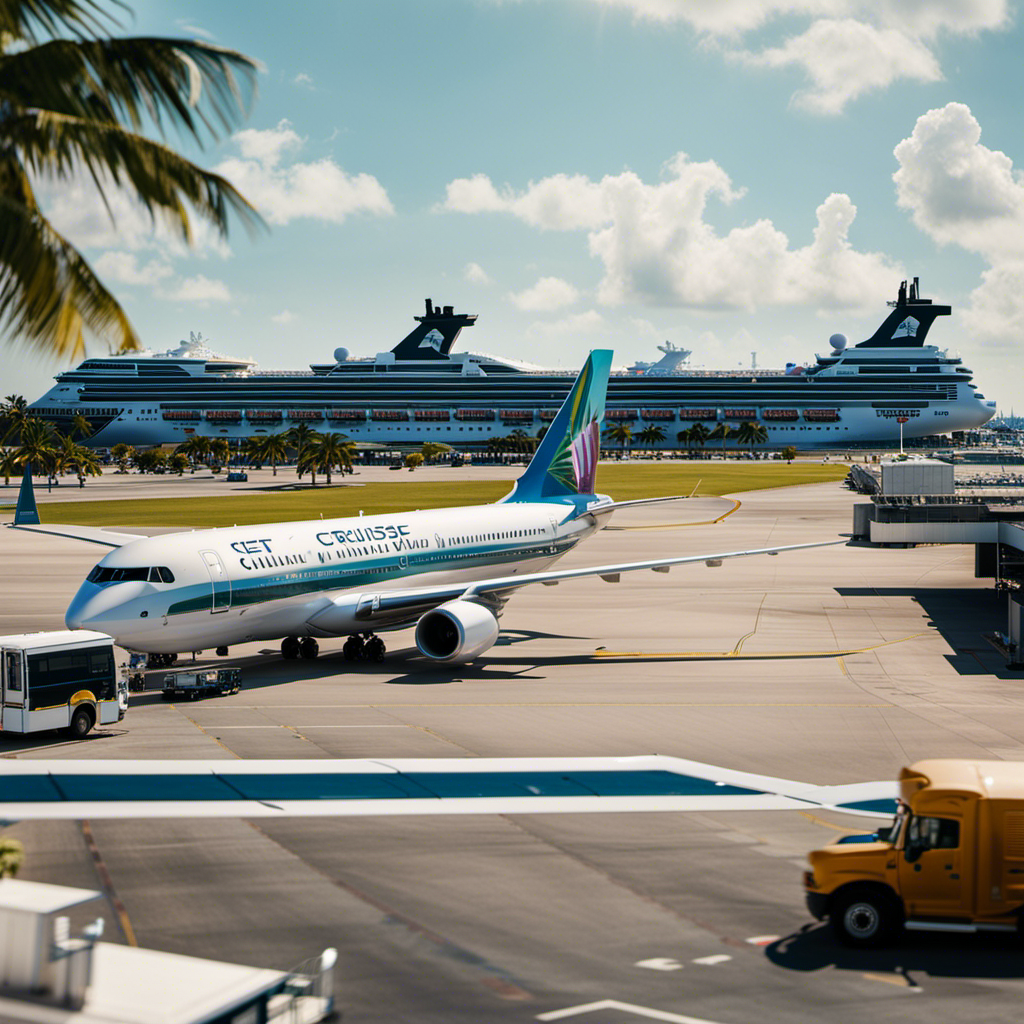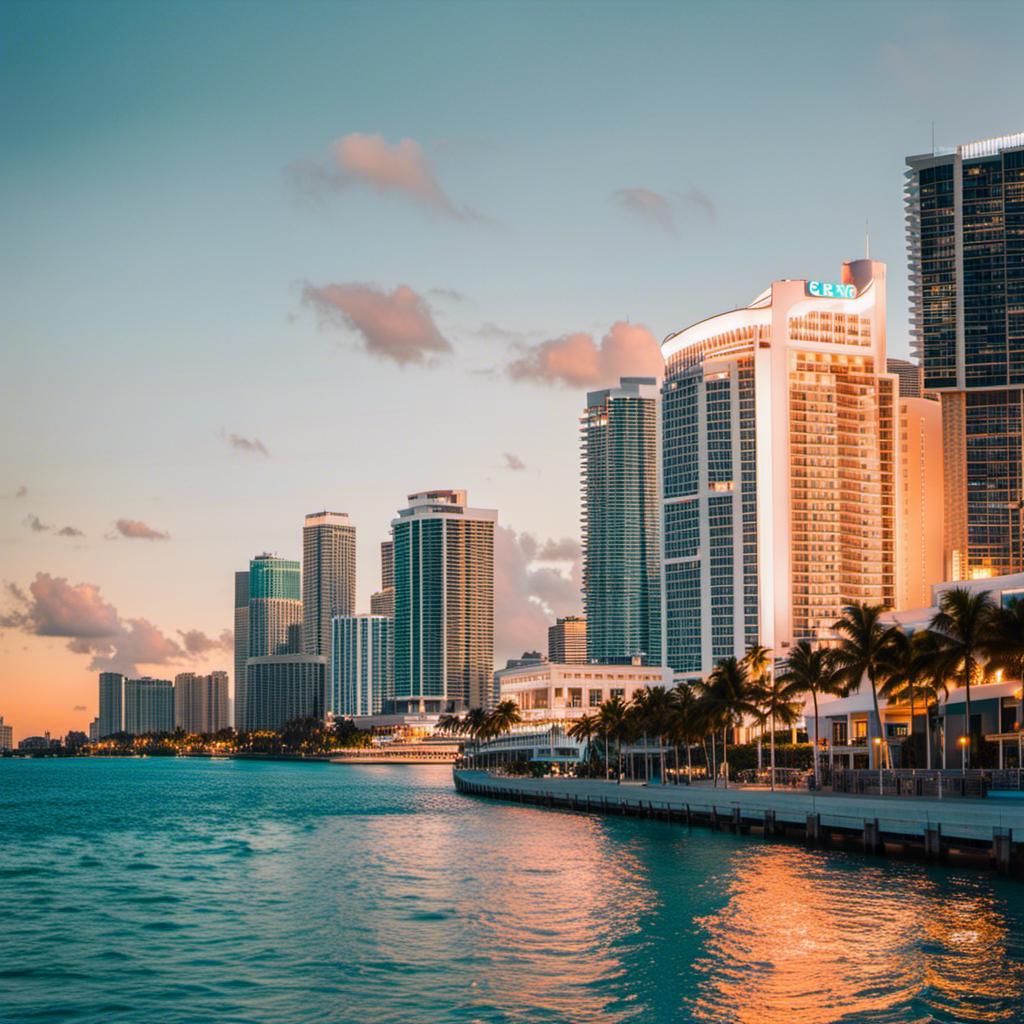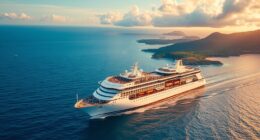The cruise industry is bouncing back quickly, with passenger numbers exceeding pre-2019 levels and more ships entering service. Expect expanded fleets offering diverse, innovative amenities targeted at a broad range of travelers, especially younger generations. Revenue grows steadily, driven by new destinations and luxury experiences, while sustainability efforts cut emissions and boost eco-friendly travel. If you want to understand how these changes shape your future cruise options, there’s more to explore below.
Key Takeaways
- Passenger volumes are expected to surpass 2019 levels by 2025, driven by post-pandemic recovery and increased travel demand.
- Fleet expansion and new ship launches will boost capacity, supporting higher passenger numbers and diversified onboard experiences.
- Revenue growth is projected to exceed pre-2019 levels by over 30%, with investments in new destinations and luxury offerings.
- Sustainability initiatives, including cleaner fuels and shore power, will enhance environmental performance and operational efficiency.
- Consumer preferences for immersive, stylish, and customizable experiences will shape onboard amenities and industry offerings.
Post-Pandemic Revival and Passenger Growth
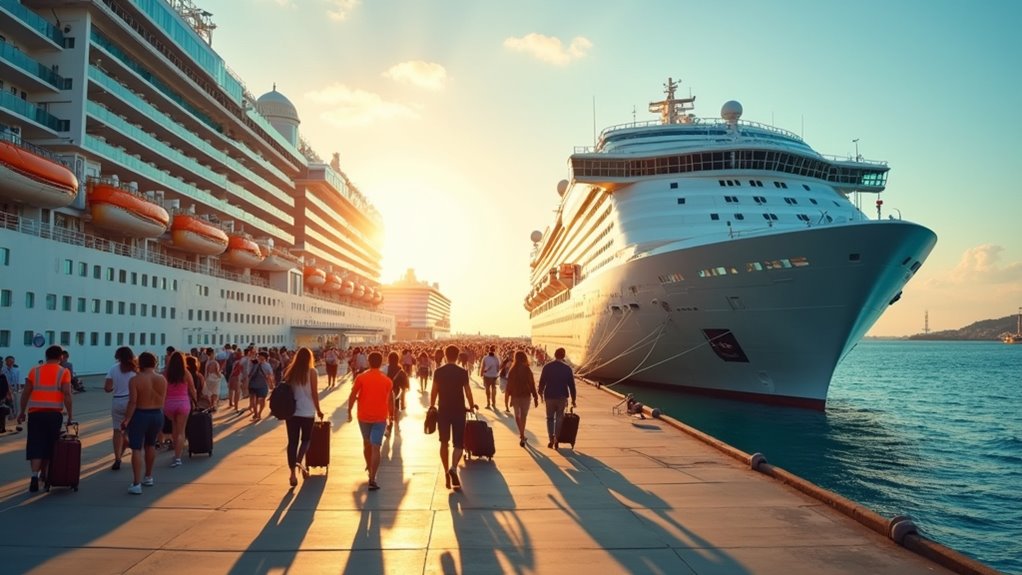
Since the pandemic’s peak, the cruise industry has experienced a remarkable recovery, surpassing pre-pandemic passenger levels and demonstrating strong growth momentum. In 2023, passenger volumes reached 107% of 2019 levels with 31.7 million travelers, and projections show they’ll hit 125% by 2025, or about 37.1 million. North America leads this rebound, with passenger numbers jumping from 12.6 million in 2022 to over 18 million in 2023. The industry recovered faster than overall tourism and hotel demand, with a compound annual growth rate of 6.3% since 1990. Record bookings, better pricing strategies, and evolving consumer preferences have fueled this surge, supporting the forecast of continued growth through 2027. This trend highlights cruise’s resilient appeal and rapid post-pandemic comeback. Additionally, innovations in passenger experience and safety protocols are playing a vital role in attracting travelers back to cruise ships. Furthermore, the adoption of health and safety measures has increased consumer confidence, encouraging more bookings and repeat visits. The industry’s focus on structural improvements and sustainable practices also signifies ongoing efforts to enhance both safety and environmental responsibility. An increase in passenger satisfaction scores has contributed significantly to the industry’s positive outlook. Moreover, the industry’s emphasis on eco-friendly initiatives demonstrates its commitment to environmental stewardship and long-term sustainability.
Expanding Fleet and Capacity Outlook
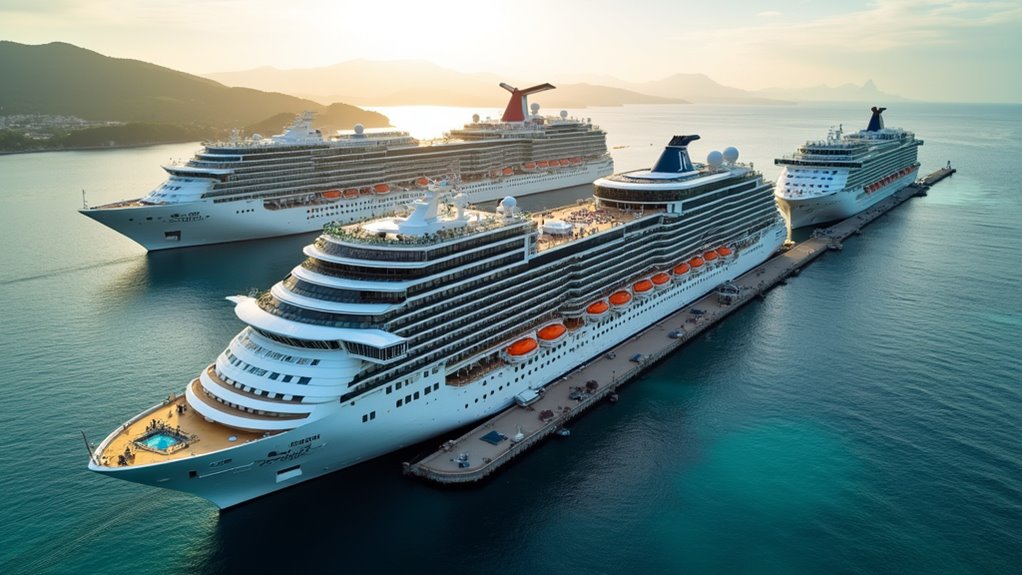
The cruise industry is set for substantial growth as new ships are scheduled for delivery between 2024 and 2025, adding over 38,600 passenger capacity. Royal Caribbean leads with the deployment of *Utopia of the Seas* and *Star of the Seas*, boosting capacity by over 600,000 lower berths across 200+ sailings in 2025. Disney Cruise Line plans to double its fleet with ships like *Disney Treasure* and *Disney Destiny*, adding more than 200,000 berths. Aroya, a new entrant launched in December 2024, is expected to offer approximately 340,300 lower berths in 2025, focusing on the Eastern Mediterranean and Arabian Gulf. Large cruise lines are continuously expanding, with multiple new ships scheduled through at least 2028, ensuring sustained fleet growth and greater capacity to meet rising demand. This expansion reflects the overall industry growth trend, driven by increasing passenger demand and global travel recovery.] In addition, innovations in cruise ship design and onboard amenities are attracting more travelers, further supporting industry expansion. Moreover, the adoption of sustainable materials and eco-friendly technologies is becoming more prevalent to meet environmental standards and appeal to eco-conscious consumers. As a result, the cruise industry is increasingly adopting green technologies to reduce environmental impact and meet evolving regulations. Additionally, advancements in payment processing solutions are enhancing onboard transaction efficiency and security for passengers and operators alike.
Revenue Trends and Market Expansion
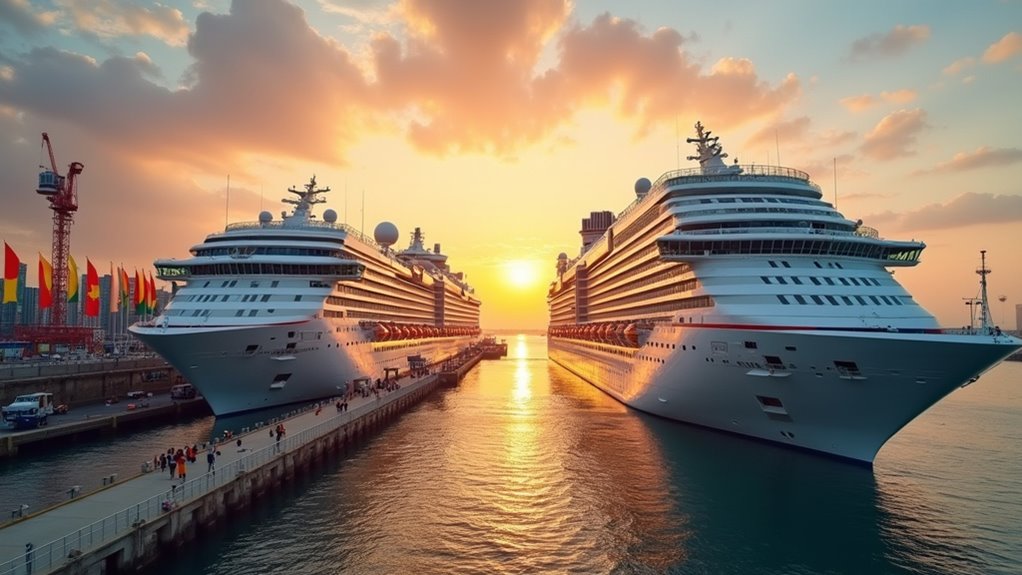
As the cruise industry rebounds from the pandemic, revenue growth is accelerating and market expansion is gaining momentum. You can expect the global cruise market revenue to hit around $44.39 billion by 2025, with continued growth projecting over $18.3 billion by 2030. This upward trend is driven by strong post-pandemic recovery, with 2025 revenue surpassing pre-2019 levels by over 30%. Expansion in themed and luxury cruises is opening new revenue streams.
You’ll notice:
- Passenger volumes are rising, with nearly 20% more travelers than 2019.
- Demand growth outpaces broader hotel sectors.
- Investments in private islands and new destinations attract more passengers.
- Niche markets and themed cruises diversify offerings and increase appeal.
- The industry’s focus on innovative experiences and espionage-themed entertainment is also contributing to its appeal among modern travelers.
- Additionally, advancements in energy-efficient systems within ships are helping cruise lines to reduce operational costs and environmental impact, supporting sustainable growth and long-term profitability.
- Furthermore, ongoing innovations in green technologies are expected to enhance the industry’s efforts toward eco-friendly operations and resilience, aligning with market expansion strategies to attract environmentally conscious consumers.
Sustainability and Technological Innovations
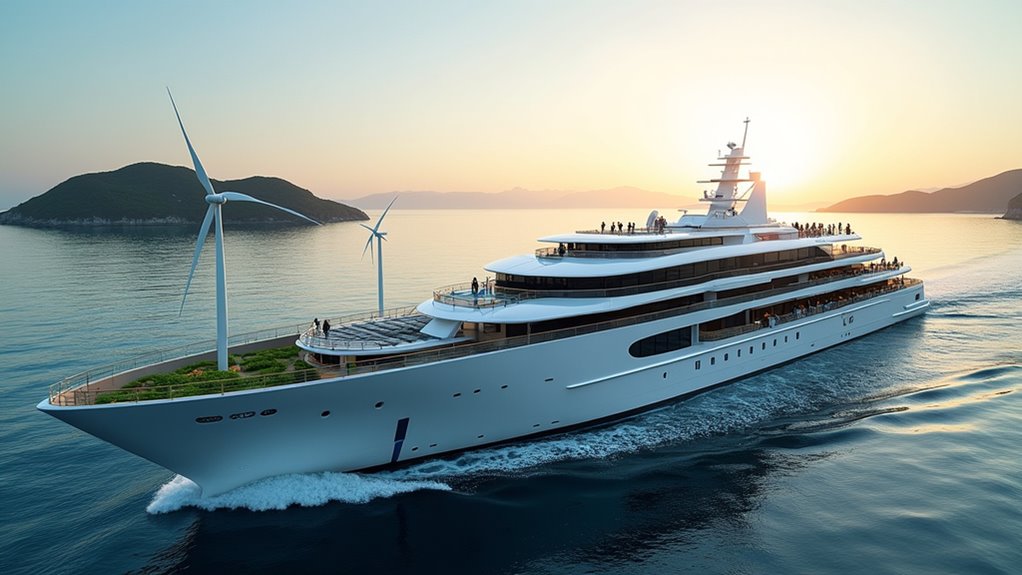
Sustainability and technological innovations are transforming the cruise industry’s approach to environmental responsibility. You’ll see cruise lines adopting cleaner fuels like LNG, which reduces nitrogen oxide, sulfur oxide, and CO2 emissions by up to 20%. Biofuels are also gaining traction as companies aim for net-zero emissions by 2050. Major operators like Carnival and Royal Caribbean are pioneering LNG ships and exploring fuel cell tech to cut emissions further. Shore power infrastructure allows ships to plug into local grids, reducing emissions while docked. New ship designs focus on energy efficiency, using hydrodynamic hulls and air lubrication to lower fuel use. Additionally, waste management systems, low-carbon excursions, and partnerships with ports are key to advancing the industry’s sustainability goals. Both the adoption of new fuels and innovative ship designs are supported by research-backed advancements in environmentally friendly technologies. Incorporating renewable energy solutions such as solar panels on ships can further decrease reliance on fossil fuels. Furthermore, ongoing innovations in energy storage systems improve the efficiency and viability of renewable energy integration on vessels. As the industry progresses, private placement equity investments are increasingly being utilized to fund these cutting-edge innovations and infrastructure projects.
Demographic Shifts and Market Segmentation
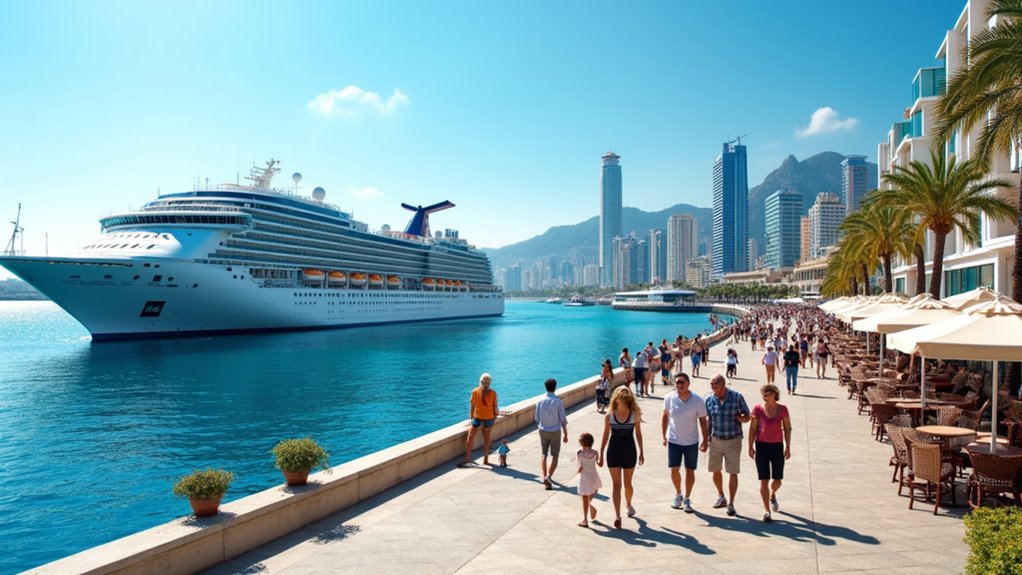
Who are the primary travelers shaping the future of cruising? You’ll find that the 25-44 age group leads, making up 45% of bookings in 2025. Meanwhile, those aged 55 and older still hold a substantial 26%, showing the market’s diversity. The 45-54 bracket accounts for 19%, indicating balanced middle-aged interest. Millennials and Gen Z are fueling demand for shorter, immersive trips, prompting cruise lines to add energetic entertainment and family-friendly amenities. Additionally, home decor trends such as stylish wall organization and aesthetic serveware influence onboard design, creating more appealing environments for diverse traveler preferences. Moreover, incorporating market segmentation strategies allows cruise companies to tailor experiences that meet the unique needs of each demographic group. Recognizing the importance of consumer preferences, cruise operators are increasingly integrating high-quality, stylish decor options to enhance guest satisfaction. This focus on understanding varied consumer needs helps shape innovative offerings that attract a broad range of guests.
Frequently Asked Questions
How Will Environmental Regulations Impact Future Cruise Fleet Deployments?
You’ll see environmental regulations shape future cruise fleet deployments considerably. You’re likely to notice more ships equipped with cleaner fuels like LNG or biofuels, and retrofitting older vessels for shore power connections. Ports will prioritize greener ships, leading to rerouted itineraries away from congested, high-emission areas. These changes mean your cruise experiences will become more sustainable, but expect some disruptions and added costs as cruise lines adapt to meet stricter environmental standards.
What Safety Protocols Will Remain Post-Pandemic to Ensure Passenger Confidence?
Sure, as if safety protocols weren’t already enough, they’ll stay post-pandemic to keep your confidence high. You’ll notice enhanced air filtration, routinely cleaned surfaces, and health screenings that seem almost too thorough. Crew members will continue sanitizing high-touch areas, and certifications like LR SHIELD will be your badge of trust. It’s almost like the cruise line’s safety obsession is here to stay—just in case you thought the journey was less secure.
How Does the Cruise Industry Plan to Attract More First-Time Travelers?
To attract more first-time travelers, the cruise industry focuses on offering shorter, affordable trips with unique experiences like private islands and adult-only areas. They use social media, influencer marketing, and personalized messages through mobile channels to connect with you directly. Collaborations with luxury brands and expanding destination options also appeal to new cruisers by making the experience more exclusive, immersive, and memorable, encouraging you to take your first voyage.
What Are the Potential Economic Risks Affecting Cruise Demand Growth?
Economic risks cast dark clouds over your cruise plans, making demand feel like a fragile ship caught in a storm. You face volatile markets, inflation-driven costs, and geopolitical turbulence that threaten to capsize growth. Rising fuel prices and supply chain disruptions tighten budgets, while global unrest and trade tensions create unpredictable ripples. These factors threaten to slow your cruise industry’s voyage, challenging its ability to chart steady waters ahead.
How Will Technological Advancements Enhance Onboard Guest Experiences?
You’ll notice that technological advancements greatly enhance your onboard experience. AI-powered concierges and virtual assistants offer personalized recommendations, while smart cabins let you control lighting, temperature, and entertainment easily. Wearable tech streamlines payments and tracks your preferences, making services more tailored. Biometric check-ins and real-time updates reduce wait times, and IoT sensors boost safety. Overall, these innovations create a seamless, convenient, and highly personalized journey, elevating your cruise experience to a new level.
Conclusion
As you navigate the evolving cruise industry, remember that like Icarus, soaring high brings risks alongside rewards. Embrace the growth and innovation ahead, but stay mindful of sustainability and shifting demographics. The horizon holds promise, yet echoes of past challenges remind you to steer wisely. With resilience and foresight, you’ll help shape a future where the voyage is as enriching as the destination itself. The journey continues—are you ready to set sail once more?
Claire, a creative soul with an unquenchable thirst for storytelling, is an integral part of the Voyager Info team. As a dedicated writer, she weaves captivating narratives that transport readers to enchanting cruise destinations and beyond.
Claire’s love affair with writing began at an early age when she discovered the magic of words and their ability to craft worlds and emotions. Her innate curiosity led her to explore various literary genres, but it was travel writing that truly captured her heart. Drawing inspiration from her own globetrotting adventures and encounters with diverse cultures, Claire embarked on a journey to become a travel writer par excellence.

